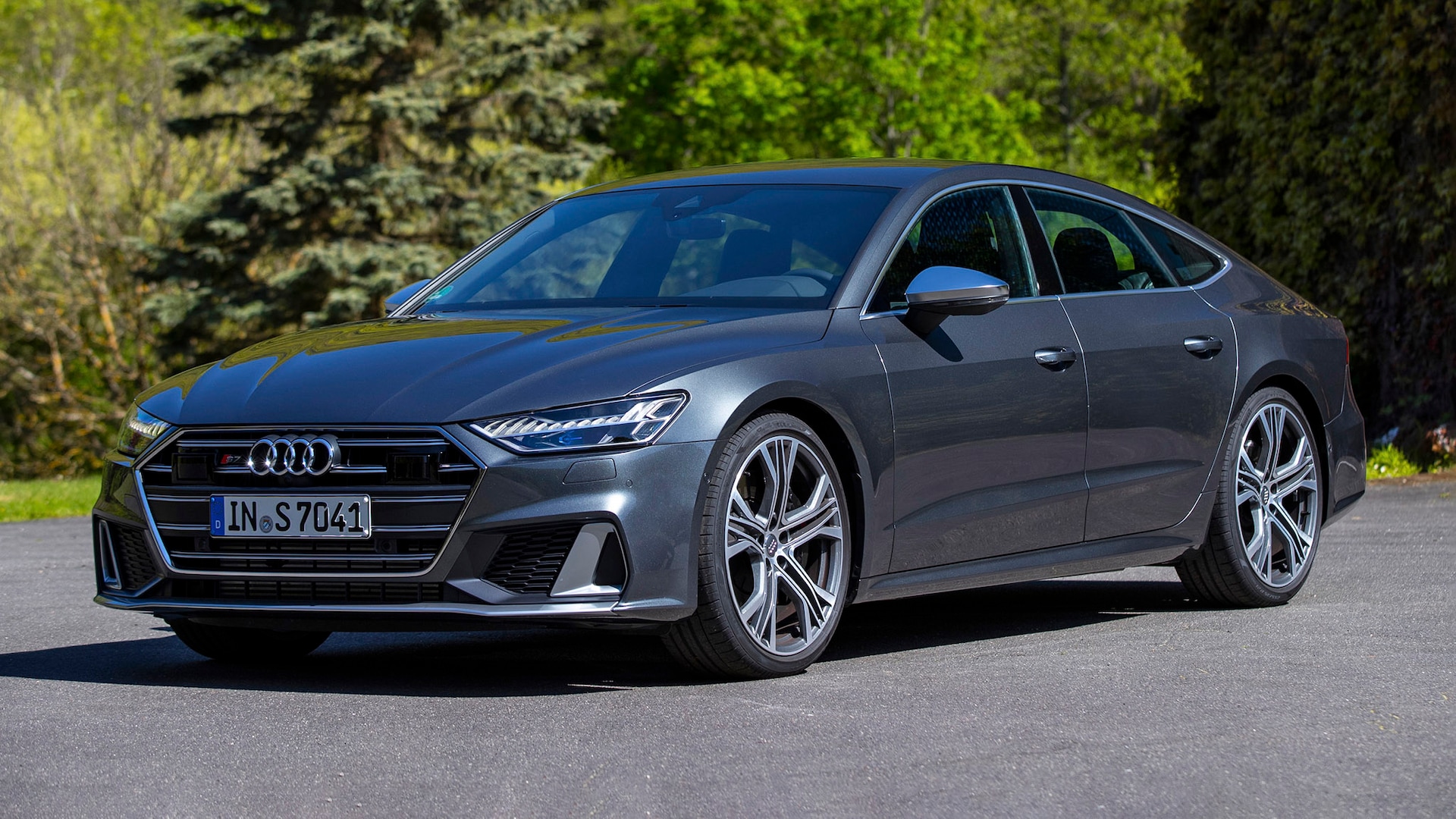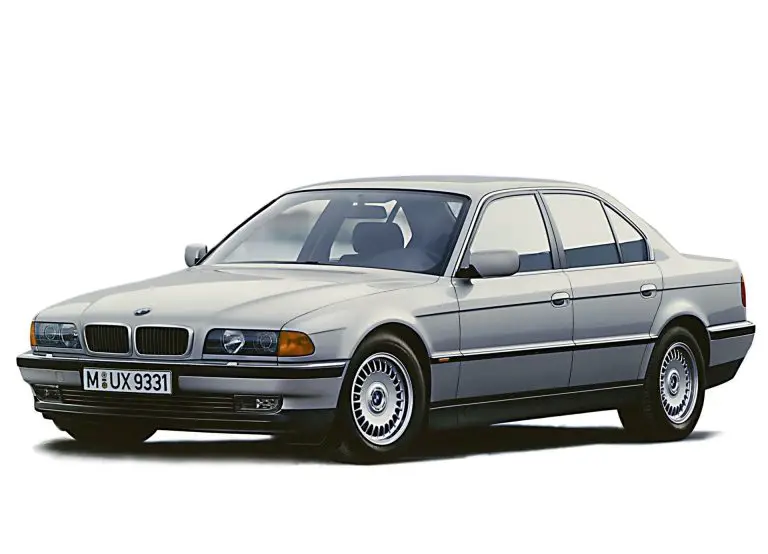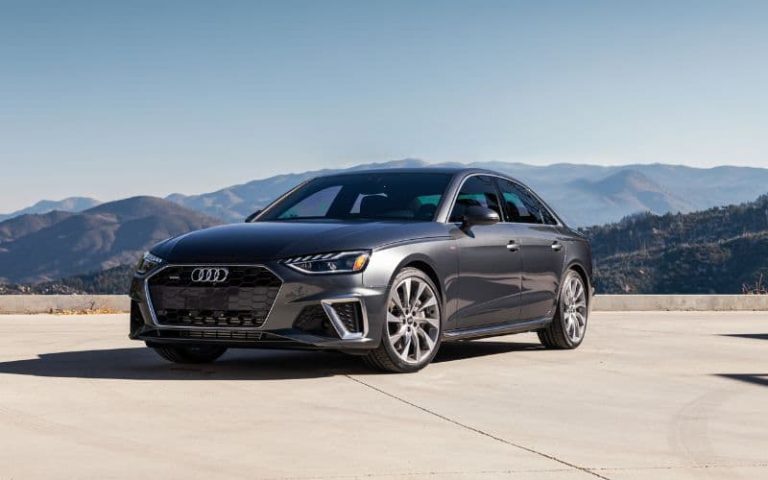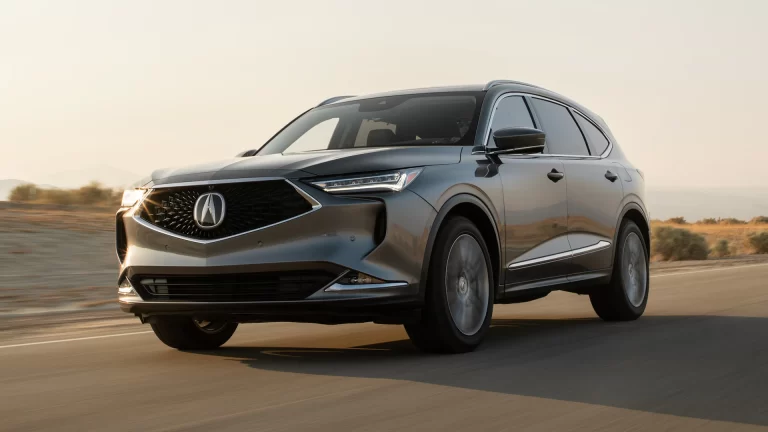Audi S7 Best and Worst Years (Quick Facts!)
Before buying a used Audi S7, prepare yourself with the necessary knowledge. Then, look at the common shortcomings, worries, and problems with the Audi S7 from the first and second versions.
The Audi lineup includes several sedans and coupes to meet a wide range of customer needs. Even the tiny A3 got a sedan variant, and despite the more recent trend of SUVs and crossovers, Audi sedans continue to be rather popular.
The A7 range, based on the Audi A6 sedan, takes the conventional 3-box sedan formula and changes it to produce an evocative vision of a coupe while maintaining a large portion of the conventional 4-door practicality.
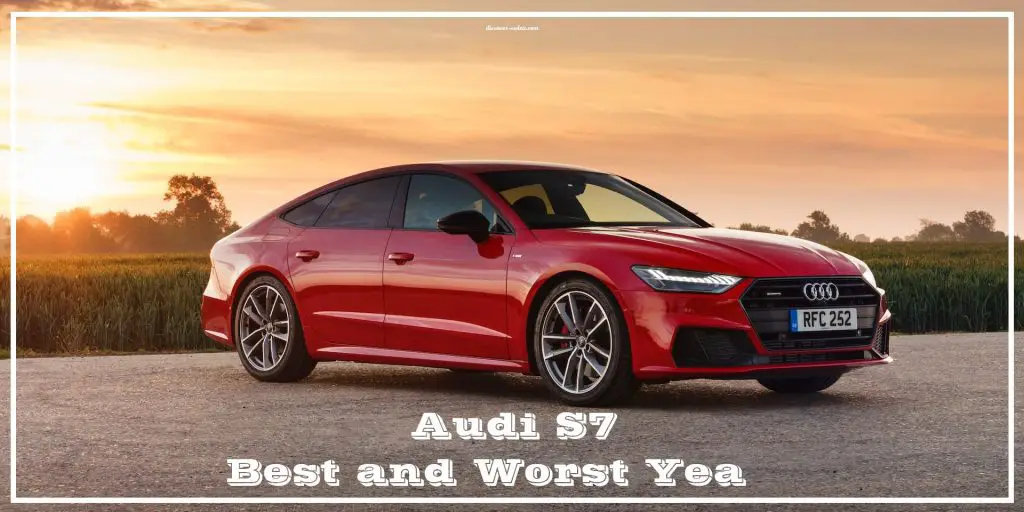
Do you like Audi? Get the list of the Most Reliable Audi Models
VIDEO: What You Need To Know Before Buying An Audi S7
Audi S7 Best and Worst Years
It’s unclear which years of the Audi S7 are considered the finest and worst. There are some signs of both excellent and terrible model years, though:
- A review shows that the 2017 Audi S7 and the 2012 Porsche Panamera4 are excellent options. According to, the 2012 Audi A7 has an above-average reliability rating of 3.5 out of 5.0. The used 2017 Audi S7’s performance, safety, and comfort features are rated by experts in a review.
- You may look for information on the Audi S7 model, including photographs, specifications, trim levels, history, facts, etc.
- Some used Audis are to be avoided at all costs.
However, the S7 model is not explicitly mentioned.
Audi S7’s Overview
The three major German automakers have long been known for their large luxury sedans, which provide space, comfort, and performance in a stylishly upscale package.
However, the 2021 Audi S7 Sportback, a svelte and opulent performance saloon that balances comfort and sportiness, is the best rendition of the formula.
In our very competitive new automobile market, big passenger cars aren’t exactly in vogue, and they’re much less popular if they bear the “luxury” label.
Ferrari outsold Audi’s A7 range in 2020 due to the vast premium segment’s tiny market share of just 0.3%. The point still stands, notwithstanding the apples and kumquats. Sedans are getting harder to find.
This second-generation S7 arrived domestically last year and brought a new, smaller powertrain that, at least on paper, has taken part of its appeal away. But it hasn’t, and I’ll explain why later.
The Audi S7 Sportback, which has a trunk instead of a liftback and starts at $159,500 plus fees for the road, costs $9600 more than the Audi S6 sedan. Yet, both vehicles are essentially the same. So people are willing to pay for the coupe-like profile’s street appeal.
The 45 TFSI Quattro, powered by Audi’s classic 2.0-liter turbo four-pot, starts at $115,900 in the more extensive A7 range, which includes four models.
The Audi A7 55 TFSI quattro, which is one rung higher, has a V6 engine and a $133,600 sticker. But, again, the rowdy and passionate RS7 sits at the top of the range, with the S7 Sportback at number two. Its 4.0-liter twin-turbo V8 engine commands $224,000 plus on-road charges.
At this price point, Mercedes-Benz CLS, a self-styled four-door coupe from Stuttgart, is the S7 Sportback’s most apparent opponent. It costs $161,535 in a six-cylinder CLS450 specification, plus taxes and fees.
The $166,500 Audi SQ8 provides V8 performance from its turbo-diesel for not much more money than the S7 Sportback if, like your neighbors, you must contemplate an SUV.
And if practicality and the ability to haul a family are priorities, the Audi RS4 Avant has the same drivetrain as the S7. Indeed, it is smaller in terms of dimensions, but at $147,900, the practicality of a station wagon—especially a stylish one like the RS4—makes a strong case.
Suppose you decide to spend 160 grand on the luxurious liftback since you appreciate the coupe-like stylings of the S7. What does your cash accomplish at the garage?
The blacked-out exterior features of the S7 set it apart from conventional A7s from the outside. These features include the grille and a more aggressive body package complimented by 21-inch alloy wheels.
The S7 undoubtedly has an intimidating presence on the road; it is both low and broad, and its swooping roofline gives it an athletic appearance. Glacier White, one of the eight colors available as free options, was chosen to finish our test car.
The black exterior finish of the “S” contrasts beautifully with the shiny white tone. As a result, it appears aggressive and quick from any angle, even when you are stationary.
A car in this price range should have a long list of standard equipment. The featured feature is adaptive air suspension, a powered tailgate with foot-gesture control, a panoramic roof, privacy glass, HD Matrix LED headlights, and soft-touch door closing.
On the interior, essential touchpoints like the dashboard, armrests, and center console are trimmed in large swathes of Nappa to compliment the expensive Valcona leather seats. In addition, the optional ($1700) carbon twill inlays contrast the brushed aluminum inlays.
Like most Audi interiors, a cabin is still a place of constraint. Its simple appearance exudes elegance, unlike some of its competitor’s frequently crowded and opulent cabins.
There is no sign of flimsiness, and it feels sturdy as well. It has the appearance and feel of a luxury vehicle.
The Valcona-trimmed seats have electronic adjustment, lumbar support, and a memory setting for the driver. They are cozy and supportive. Also heated are the front seats.
The haptic feedback of the touchscreens is pleasing and tactile, and Audi’s twin-screen setup is also a peach. In addition, the S7 has wireless Apple CarPlay and Android Auto smartphone connectivity, 3D satellite navigation, a premium Bang & Olufsen sound system, and Audi’s MMI navigation plus the operating system.
Unsurprisingly, the outstanding Virtual Cockpit driver display from Audi, which can be customized in various ways to suit your needs best, is included with the S7 Sportback.
Unfortunately, although other manufacturers have followed Audi’s lead in providing digital driver displays, they have yet to come close to matching the setup’s simplicity and clarity. As a result, it continues to be the torch-bearer.
The second row has climate settings and adequate passenger space in the back seats. However, it should be noted that although this is occasionally a five-seater, the comfort and legroom in the middle pew have been sacrificed.
Audi defends itself by stating that the S7 Sportback has 4+1 seats.
While the second row is occupied, the boot capacity is 525 liters; however, when the back seats are folded in a 40:20:40 configuration, it increases to 1380 liters.
Check these out:
Audi RS5 Best and Worst Years (Quick Facts!)
Audi RS6 Best and Worst Years (Quick Facts!)
There is a space-saving spare under the floor.
A 2.9-liter twin-turbo V6 with chiseled lines and scallops, producing 331kW at 6700 rpm and 600Nm from 1900 to 5000 pm, is housed beneath that long, wide bonnet.
A new eight-speed automatic transmission, which replaces the older model’s seven-speed dual-clutch transmission, distributes those outputs to all four wheels.
The Porsche Macan GTS and other vehicles in the broader Volkswagen group lineup, such as the RS4 Avant and RS5 Coupe, also use the same 2.9-liter V6 engine.
Additionally, it lacks two cylinders and 1.1 liters of the 4.0-liter V8 engine found in the previous generation S7, which was chosen for fuel efficiency.
Except for the sonic department, where the V6 lacks the aural drama of the V8, it hasn’t hurt the S7. It has the same 331kW of power as the larger V8, so it doesn’t lack strength. Moreover, the torque is higher (600Nm as opposed to 550Nm for the V8).
However, downsizing hasn’t affected acceleration, with a benchmark sprint time of 0-100 km/h said to be identical at 4.6 seconds.
Undoubtedly, the S7 is an actual performance vehicle, eager to pick up speed when necessary and react quickly. The fact that it does so calmly is an added plus.
There is no loud soundtrack, and the S7 errs on the side of being peaceful and tranquil, which is excellent for a vehicle of this type that is more of a grand tourer than a straight-up sports sedan. But don’t be deceived by the calm. The S7 replies to questions eagerly and confidently.
The S7 never seems pressured thanks to the broad torque range (peak torque is available between 1900 and 5000 rpm), and it just accelerates away without much fanfare or fuss.
The original V8 had the kind of music that could make the heart sing, although some people will bemoan the lack of fanfare. But get used to it. In the present-day automobile scene, V8s are a dying breed.
The eight-speed automatic transmission performs a respectable job of shifting through the gears; it is glad to hold onto revs when necessary and equally happy to look for the best efficiency when driving around town.
Moreover, it reacts quickly to right foot inputs and changes down confidently for rapid acceleration when necessary.
The S7 Sportback performs its daily driving responsibilities with grace and without fanfare. Despite riding on 21-inch alloy wheels with small tires, the ride on that standard-fit air suspension is nothing short of fantastic, the S7 dismissing road rash with ease.
Audi’s suspension tuning has always been able to strike a balance between comfort and sportiness. The most recent S7 Sportback continues that legacy.
The S7 feels its dimension when things get tight, but it is equally at home on long miles of gently curving roads, like our little hidden-away jewel outside Sydney.
We’ll overlook that since it’s not marketed as a hot hatch rivaling corner carver.
Enjoy its Quattro all-wheel drive system’s confidence instead (the drive is apportioned 40:60 front to rear under normal conditions, but the system can shuffle torque up to 70 percent forward or 85 percent to the rear if conditions warrant).
As a result, the S7 never seems to be approaching the limits of adhesion when navigating those lengthy and twisting roads.
Over 100 km/h on the combined cycle, the S7 Sportback, according to Audi, needs just 8.5 liters of premium unleaded fuel. With the Sportback yielding an indicated 12.7L/100km during our week, we could not even come close to matching that.
In addition, despite the snarls and stop-start traffic, it was a good week for driving in cities.
Audi’s 48-volt mild hybrid system is installed in the S7 and can coast the V6 for up to 40 seconds when certain conditions are fulfilled, reducing fuel consumption by about 0.4L/100km.
It’s a clever trick, made even more so by the tiny haptic stimulation transmitted to the accelerator pedal to let you know when the necessary conditions have been reached.
The more extensive A7 series received a five-star ANCAP certification in 2018, given to the Audi S7. Autonomous emergency braking, blind-spot monitoring, front and rear cross-traffic warning, adaptive cruise control, lane-keeping assist, and exit warning are some of the advanced safety features that support the S7’s rating (which alert the driver to any vehicles or cyclists approaching from behind at door-opening).
ANCAP gave the S7 a score of 93% for protecting adult occupants, 85% for protecting children, and 81%) for protecting vulnerable road users. In addition, eight airbags protect both rows’ occupants.
Although Audi’s 12-month/15,000-kilometer servicing intervals are more commonplace, it’s three-year/unlimited-kilometer warranty needs to be updated today.
An additional five-year service plan is available to owners. It requests $4110, or an average of $822 per year.
Although there has been a drastic shift in consumer preference away from large sedans, some vehicles can still be rewarding and comfortable for drivers who dare to break the mold of SUV ownership.
The benefits are numerous for something as specialized as the Audi S7 Sportback.
The recipe for luxury motoring is an understated but undeniably premium interior coupled with an engaging and willing drivetrain, and the 2021 Audi S7 Sportback has it in spades.
Learn more about Audi RS7 Best and Worst Years (Quick Facts!)
The Best Years for the Audi S7
The Audi S7 performed best from 2014 through 2016, followed by 2017. According to, the models stayed essentially the same from 2014 to 2016 except for technology advancements, while the Performance model debuted in 2017.
According to a review, the most straightforward approach to guard against turbo failures is to look at service records that show oil changes every 5,000 miles or 8,000 kilometers. According to, the 2012 Audi A7 has an above-average reliability rating of 3.5 out of 5.0.
Furthermore, according to a review, the Audi S7 had an upgrade in 2015 and now features a faster, newer 420-hp V8 engine.
Ultimately, comparing the 2012 Panamera4 and the 2017 Audi S7 indicates that both vehicles make excellent options.
The Worst Years for the Audi S7
It needs to be clarified what people believe to be the worst years for the Audi S7. According to, the S7 is the least reliable of 31 Audi vehicles.
However, owners have reported no problems during nine model years. The 2014 Audi S4 and 2016 Audi RS7, among other old Audis, are advised to be avoided like the plague, according to a review, although no specific information is given about the S7 model.
According to, the 2012 Audi A7 has an above-average reliability rating of 3.5 out of 5.0. According to a forum post, there may be a warning concerning a specific model year between 2011 and 2018 (2016 for the S7 only due to cost).
In addition, several Audi sedans from the 2013–2017 model years have reportedly been recalled owing to a turbocharger fault that could result in stalling problems.
How Safe is an Audi S7?
Several prospective purchasers are concerned about the safety of the Audi S7. According to, the NHTSA has only given the Audi A7, which only received a five-star rating in a side crash test, a thorough safety analysis.
According to a review, you may check the 2020 S7’s IIHS and NHTSA crash safety ratings to see how effectively passengers are protected in frontal, rear, and side impact incidents. Driver-side small overlap frontal ratings are provided by the Insurance Institute for Highway Safety (IIHS) based on a test by Volkswagen/Audi for frontal crash test verification.
More stars indicate safer cars, and the NHTSA’s 5-Star Safety Ratings are supposed to help consumers compare vehicle safety while looking for a car.
Finally, according to Euro NCAP, information on the safety rating of the Audi A7 includes detailed results, crash test images, videos, and expert comments.
How Reliable Is Audi S7?
What do people think of the Audi S7’s dependability? There needs to be more information to rate the Audi S7’s reliability.
According to a forum post, some purchasers may be concerned about the V8 engine’s potential requirement for a costly cam drive service at 100k miles.
According to a review, the 2018 Audi S7 has been continuously terrific, trustworthy, ergonomic, and gorgeous. In a review, the 2017 Audi S7 is praised for its strength, quickness, and dependable technology.
Finally, turbo reliability typically necessitates rebuilding or replacing them between 75 and 100 thousand miles.
How Can You Tell Whether Something Is a Lemon?
Purchase a vehicle history report.
There is no better initial step when purchasing a used car than to obtain a car history report. Two well-known services offer this information for little money:
Anyone looking to purchase a used car will find the information provided by CarFax and AutoCheck extremely helpful. The reports let you know the number of past owners, whether or not it had any accidents, how frequently it required maintenance, and the current title.
The final section is among the most crucial since it contains the lemon label, which attests that the car followed the correct legal procedures to be designated as a lemon.
However, in some areas, dealers must inform a customer if the vehicle is a manufacturer buyback, which is a reliable way to determine whether a vehicle has a lemon title.
However, it is the responsibility of the buyer to conduct a thorough investigation into the vehicle’s history. Therefore, consumers may need help if they accidentally purchase a secondhand lemon because they must inspect it first.
Owner Background
You can view the owner’s history on the vehicle history report, which should indicate whether the manufacturer has purchased the vehicle back.
While owners can claim a car is a lemon in a legal dispute and ask the automaker to buy back the problematic vehicle, that is a guaranteed technique to determine if the car was labeled a lemon.
You can also determine if the vehicle was sold or traded before it was given a lemon tag if the prior owner may have missed an issue. It also implies that the car’s persistent issue must be apparent.
Repair Record
Look carefully at the vehicle’s repair record and try to identify any recurring issues. Recurring problems in cars with lemon histories are simple to spot.
You can determine whether the issues with the car are minor wear and tear concerns, such as those with the clutch or brakes, or a more severe problem. Check to discover if the repairs were necessary or carried out even when the car was brand new.
It can assist in determining whether the car is a lemon or if an incident like a collision or modification caused a misdiagnosed issue.
Are the repairs significant or minor? A severe repair would deal with the drivetrain or suspension, whereas a superficial one would address non-driving-related issues like window or seat controls.
Severe repairs would be more challenging, but handling a car might not be a hassle if a car was considered a lemon for a less severe cause.
The report also shows whether repairs are being made at a dealership or a general shop. Like you would with any used car, examine the vehicle’s general condition and health and determine whether routine maintenance has also been carried out.
This will assist you in deciding whether or not you should consider purchasing this car.
Inspection before purchase
Is the car still a good investment? You should get a pre-purchase inspection if the flaws are not too concerning or if you believe the automobile may have been incorrectly labeled as a lemon.
A mechanic can determine whether the problems are repairable and why the car was considered a lemon. A technician can assist you in determining whether or not a recurring issue is indicative of more severe problems or worries about the quality of the vehicle.
Their satisfaction with the car might help determine if it is a worthwhile investment or a lost cause.
Audi S7 FAQ’s
Are Audi S7s trustworthy?
Safety and Reliability
Audi has a solid reputation for dependability, and the S7 uses parts found throughout the entire lineup. Parking sensors, xenon lighting, and six airbags are all standard. All of Audi’s active safety technology features are available as options.
Which Audis are the most trustworthy?
It’s also the most dependable Audi you can purchase. In the What Car? dependability assessment, the A3 outperformed the Volvo V40, Ford Focus, and even the Honda Civic with a 93.6% reliability grade. The A3 has less well-known issues, yet it is more reliable than other Audis.
Is the Audi S7’s upkeep expensive?
Costs of Audi S7 auto maintenance and repairs
A typical Audi S7 maintenance and repair expense is $403, with costs ranging from $95 to $3693.
Is the 2016 Audi S7 dependable?
Although the build quality and dependability of this S7 are usually regarded as good, there are a few things to watch out for. According to reports, the electronic handbrake can occasionally become stuck.
The Audi S7 is swift?
The S7 is 0.3 and 0.2 seconds slower than the previous model in the quarter-mile and the 60-mph dash, respectively.
John Valdez - Passionate Car Enthusiast and Accomplished Writer
Meet John Valdez, a dedicated car lover and seasoned writer whose passion for automobiles is as vibrant as his words are eloquent. With a keen eye for detail and a heart that beats to the rhythm of engines, John brings a unique blend of expertise and enthusiasm to the world of automotive journalism.

